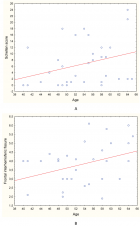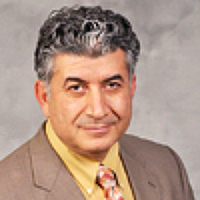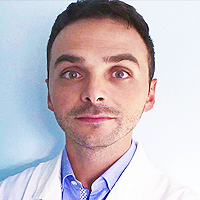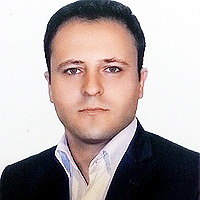Abstract
Research Article
Impact of the COVID-19 infection on the “benign” nature of the illness of Schönlein-Henoch
A Vasileva*, IV Chakarov and P Chakarova
Published: 11 January, 2022 | Volume 6 - Issue 1 | Pages: 007-010
The incidence of COVID-19 in children has been variable. Although now the number of infected children worldwide, and in particular nationally, is small, they are not protected from the infection. Moreover, in the most severe cases septic shock, metabolic acidosis, irreversible bleeding, and coagulation dysfunction have been registered.
In February 2021 a 17-year-old boy showed for examination with complaints of pain in the upper part of the abdomen, accompanied by involvement of the ankle joints, the appearance of a rash on the lower extremities with the characteristic of hemorrhagic vasculitis, and a positive test for COVID-19. The characteristics of the skin purpura, the abdominal pain, and the arthralgia led us to the diagnosis of Schönlein-Henoch purpura.
The verification of past COVID-19 infection was done by the established high titer of specific IgG antibodies. The clinical evolution of the disease went beyond its generally accepted benign nature - the first manifestation of the illness had been followed by four more relapses, which necessitated new hospitalizations and a change in the therapeutic approach.
COVID-19 infection is the cause of a more aggressive course of vasculitis.
Read Full Article HTML DOI: 10.29328/journal.ijcv.1001042 Cite this Article Read Full Article PDF
Keywords:
COVID-19; Henoch-Schönlein purpura; Abdominal pain
References
- Shi JS, Gu JY, Wang M. Clinical manifestations, gastroscopic, and pathological features of abdominal type Henoch-Schonlein purpura in children. Pediatr Nephrol. 2013; 28: 1424-1424.
- Hung SP, Yang YH, Lin YT, Wang LC, Lee JH, et al. Clinical manifestations and outcomes of Henoch-Schönlein purpura: comparison between adults and children. Pediatr Neonatol. 2009; 50: 162-168. PubMed: https://pubmed.ncbi.nlm.nih.gov/19750891/
- Mills JA, Michel BA, Bloch DA, Calabrese LH, Hunder GG, et al. The American College of Rheumatology 1990 criteria for the classification of Henoch-Schönlein purpura. Arthritis Rheum. 1990; 33: 1114-21. PubMed: https://pubmed.ncbi.nlm.nih.gov/2202310/
- Davies PJ. Mozart’s death: a rebuttal of Karhausen: further evidence for Schönlein-Henoch syndrome. J R Soc Med. 1991; 84: 737-740. PubMed: https://www.ncbi.nlm.nih.gov/pmc/articles/PMC1295524/
- Couture A, Veyrac C, Baud C, Galifer RB, Armelin I. Evaluation of abdominal pain in Henoch-Schönlein syndrome by high frequency ultrasound. Pediatr Radiol. 1992; 22: 12-17. PubMed: https://pubmed.ncbi.nlm.nih.gov/1594303/
- Martinez-Frontanilla LA, Haase GM, Ernster JA, Bailey WC. Surgical complications in Henoch-Schönlein Purpura. J Pedaitr Surg. 1984; 19: 434-436. PubMed: https://pubmed.ncbi.nlm.nih.gov/6481588/
- Besbas N, Saatci U, Ruacan S, Ozen S, Sungur A, et al. The role of cytokines in Henoch-Schonlein purpura. Scand J Rheumatol. 1997; 26: 456-460. PubMed: https://pubmed.ncbi.nlm.nih.gov/9433407/
- Saulsbury FT. Henoch-Schönlein purpura. Curr Opin Rheumatol. 2010; 22: 598-602. PubMed: https://pubmed.ncbi.nlm.nih.gov/20473173/
- Del Vecchio GC, Penza R, Altomare M, Picante L, Aceto G, et al. Cytokine pattern and endothelium damage markers in Henoch-Schönlein purpura. Immunopharmacol Immunotoxicol. 2008; 30: 623-629. PubMed: https://pubmed.ncbi.nlm.nih.gov/18668398/
- Dalens B, Travade P, Labbé A, Bezou MJ. Diagnostic and prognostic value of fibrin stabilising factor in Schönlein-Henoch syndrome. Arch Dis Child. 1983; 58: 12-14. PubMed: https://pubmed.ncbi.nlm.nih.gov/6830268/
- Kamitsuji H, Tani K, Yasui M, Taniguchi A, Taira K, et al. Activity of blood coagulation factor XIII as a prognostic indicator in patients with Henoch-Schönlein purpura. Efficacy of factor XIII substitution. Eur J Pediatr. 1987; 146: 519-523. PubMed: https://pubmed.ncbi.nlm.nih.gov/3678279/
- Bowyer SL, Ragsdale CG, Sullivan DB. Factor VIII related antigen and childhood rheumatic disease. J Rheumatol. 1989; 16: 1093-1097. PubMed: https://pubmed.ncbi.nlm.nih.gov/2585406/
- Nusinow SR, Federici AB, Zimmerman TS, Curd JG. Increased von Willebrand factor antigen in the plasma of patients with vasculitis. Arthritis Rheum. 1984; 27: 1405-1410. PubMed: https://pubmed.ncbi.nlm.nih.gov/6508862/
- Woolf AD, Wakerley G, Wallington TB, Scott DGI, Dieppe PA. Factor VIII related antigen in the assessment of vasculitis. Ann Rheum Dis. 1987; 46: 441-447. PubMed: https://pubmed.ncbi.nlm.nih.gov/3115202/
- Vasavada P. Ultrasound evaluation of acute abdominal emergencies in infants and children. Radiol Clin North Am. 2004; 42: 445-456. PubMed: https://pubmed.ncbi.nlm.nih.gov/15136027/
- Ozdemir H, Isik S, Buyan N. Sonographic demonstration of intestinal involvement in Henoch-Schönlein syndrome. Eur J Radiol. 1995; 20: 32-34. PubMed: https://pubmed.ncbi.nlm.nih.gov/7556249/
- Bomelburg T, Claasen U, von Langerke HJ. Intestinal ultrasonographic findings in Schönlein-Henoch syndrome. Eur Pediatr. 1991; 150: 158-160. PubMed: https://pubmed.ncbi.nlm.nih.gov/2044583/
- Yang HR, Choi WJ, Ko JS, Seo JK. Intravenous immunoglobulin for severe gastrointestinal manifestation of Henoch-Schönlein purpura refractory to corticosteroid therapy. Korean Pediatr. 2006; 69: 798-806. PubMed: https://pubmed.ncbi.nlm.nih.gov/27133370/
- Ebert EC. Gastrointestinal manifestations of Henoch-Schonlein purpura. Dig Dis Sci. 2008; 53: 2011-2019. PubMed: https://pubmed.ncbi.nlm.nih.gov/18351468/
- Fukui H, Kamitsuji H, Nagao T, Yamada K, Akatsuka J, et al. Clinical evaluation of a pasteurizes factor XIII concentrate administration in Henoch-Schönlein purpura. Thromb Res 1989; 56: 447-75.
Figures:

Figure 1

Figure 2
Similar Articles
-
Pseudoephedrine protects mice from infection of H1N1 virusZhongping Wu*,Li Deng,Chengzhi Chu,Xiaoyin Chen*. Pseudoephedrine protects mice from infection of H1N1 virus. . 2020 doi: 10.29328/journal.ijcv.1001008; 4: 014-020
-
The Psychology of the Common Cold and Influenza: Implications for COVID-19Andrew P Smith*. The Psychology of the Common Cold and Influenza: Implications for COVID-19. . 2020 doi: 10.29328/journal.ijcv.1001011; 4: 027-031
-
Yemen is free of COVID-19Hussein O Kadi*. Yemen is free of COVID-19. . 2020 doi: 10.29328/journal.ijcv.1001012; 4: 032-033
-
Exploring pathophysiology of COVID-19 infection: Faux espoir and dormant therapeutic optionsVinod Nikhra*. Exploring pathophysiology of COVID-19 infection: Faux espoir and dormant therapeutic options. . 2020 doi: 10.29328/journal.ijcv.1001013; 4: 034-040
-
COVID-19: Targeting the cytokine storm via cholinergic anti-inflammatory (Pyridostigmine)Ahmed H Osman*. COVID-19: Targeting the cytokine storm via cholinergic anti-inflammatory (Pyridostigmine). . 2020 doi: 10.29328/journal.ijcv.1001014; 4: 041-046
-
Identifying patterns in COVID-19: Morbidity, recovery and the aftermathVinod Nikhra*. Identifying patterns in COVID-19: Morbidity, recovery and the aftermath. . 2020 doi: 10.29328/journal.ijcv.1001016; 4: 056-064
-
Role of nanotechnology in diagnosing and treating COVID-19 during the PandemicAbdul Baset*,Abdul Waris,Muhammad Ali,Atta Ullah Khan,Asmat Ali. Role of nanotechnology in diagnosing and treating COVID-19 during the Pandemic. . 2020 doi: 10.29328/journal.ijcv.1001017; 4: 065-070
-
COVID-19: The possible medical strategiesMohamed SA Mohamed*. COVID-19: The possible medical strategies. . 2020 doi: 10.29328/journal.ijcv.1001018; 4: 071-075
-
Inhaled statins to combat COVID-19 – prophylactic and treatment approachArchana P Iyer*,Maryam A Al-Ghamdi. Inhaled statins to combat COVID-19 – prophylactic and treatment approach. . 2020 doi: 10.29328/journal.ijcv.1001020; 4: 079-080
-
A Comprehensive review on genomic diversity and epidemiology of COVID-19Zeshan Haider Raza*,Muhammad Ahmed Ihsan,Sahrish Khan,Haroon Zafar,Tayyaba Rehman. A Comprehensive review on genomic diversity and epidemiology of COVID-19. . 2020 doi: 10.29328/journal.ijcv.1001021; 4: 081-095
Recently Viewed
-
Navigating Neurodegenerative Disorders: A Comprehensive Review of Current and Emerging Therapies for Neurodegenerative DisordersShashikant Kharat*, Sanjana Mali*, Gayatri Korade, Rakhi Gaykar. Navigating Neurodegenerative Disorders: A Comprehensive Review of Current and Emerging Therapies for Neurodegenerative Disorders. J Neurosci Neurol Disord. 2024: doi: 10.29328/journal.jnnd.1001095; 8: 033-046
-
Metastatic Brain Melanoma: A Rare Case with Review of LiteratureNeha Singh,Gaurav Raj,Akshay Kumar,Deepak Kumar Singh,Shivansh Dixit,Kaustubh Gupta*. Metastatic Brain Melanoma: A Rare Case with Review of Literature. J Radiol Oncol. 2025: doi: 10.29328/journal.jro.1001080; 9: 050-053
-
Validation of Prognostic Scores for Attempted Vaginal Delivery in Scar UterusMouiman Soukaina*,Mourran Oumaima,Etber Amina,Zeraidi Najia,Slaoui Aziz,Baydada Aziz. Validation of Prognostic Scores for Attempted Vaginal Delivery in Scar Uterus. Clin J Obstet Gynecol. 2025: doi: 10.29328/journal.cjog.1001185; 8: 023-029
-
Scientific Analysis of Eucharistic Miracles: Importance of a Standardization in EvaluationKelly Kearse*,Frank Ligaj. Scientific Analysis of Eucharistic Miracles: Importance of a Standardization in Evaluation. J Forensic Sci Res. 2024: doi: 10.29328/journal.jfsr.1001068; 8: 078-088
-
A study of coagulation profile in patients with cancer in a tertiary care hospitalGaurav Khichariya,Manjula K*,Subhashish Das,Kalyani R. A study of coagulation profile in patients with cancer in a tertiary care hospital. J Hematol Clin Res. 2021: doi: 10.29328/journal.jhcr.1001015; 5: 001-003
Most Viewed
-
Evaluation of Biostimulants Based on Recovered Protein Hydrolysates from Animal By-products as Plant Growth EnhancersH Pérez-Aguilar*, M Lacruz-Asaro, F Arán-Ais. Evaluation of Biostimulants Based on Recovered Protein Hydrolysates from Animal By-products as Plant Growth Enhancers. J Plant Sci Phytopathol. 2023 doi: 10.29328/journal.jpsp.1001104; 7: 042-047
-
Sinonasal Myxoma Extending into the Orbit in a 4-Year Old: A Case PresentationJulian A Purrinos*, Ramzi Younis. Sinonasal Myxoma Extending into the Orbit in a 4-Year Old: A Case Presentation. Arch Case Rep. 2024 doi: 10.29328/journal.acr.1001099; 8: 075-077
-
Feasibility study of magnetic sensing for detecting single-neuron action potentialsDenis Tonini,Kai Wu,Renata Saha,Jian-Ping Wang*. Feasibility study of magnetic sensing for detecting single-neuron action potentials. Ann Biomed Sci Eng. 2022 doi: 10.29328/journal.abse.1001018; 6: 019-029
-
Pediatric Dysgerminoma: Unveiling a Rare Ovarian TumorFaten Limaiem*, Khalil Saffar, Ahmed Halouani. Pediatric Dysgerminoma: Unveiling a Rare Ovarian Tumor. Arch Case Rep. 2024 doi: 10.29328/journal.acr.1001087; 8: 010-013
-
Physical activity can change the physiological and psychological circumstances during COVID-19 pandemic: A narrative reviewKhashayar Maroufi*. Physical activity can change the physiological and psychological circumstances during COVID-19 pandemic: A narrative review. J Sports Med Ther. 2021 doi: 10.29328/journal.jsmt.1001051; 6: 001-007

HSPI: We're glad you're here. Please click "create a new Query" if you are a new visitor to our website and need further information from us.
If you are already a member of our network and need to keep track of any developments regarding a question you have already submitted, click "take me to my Query."



















































































































































